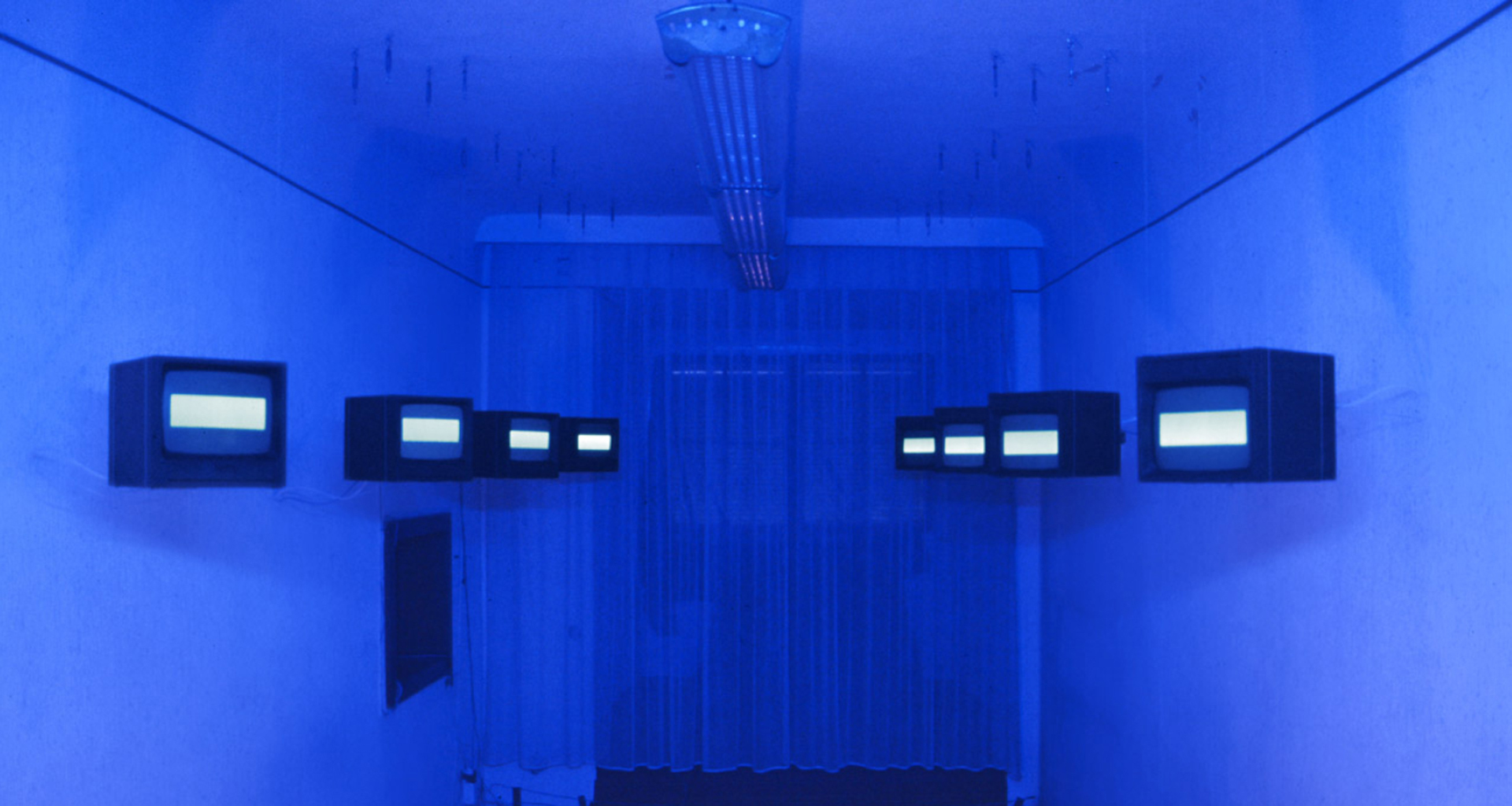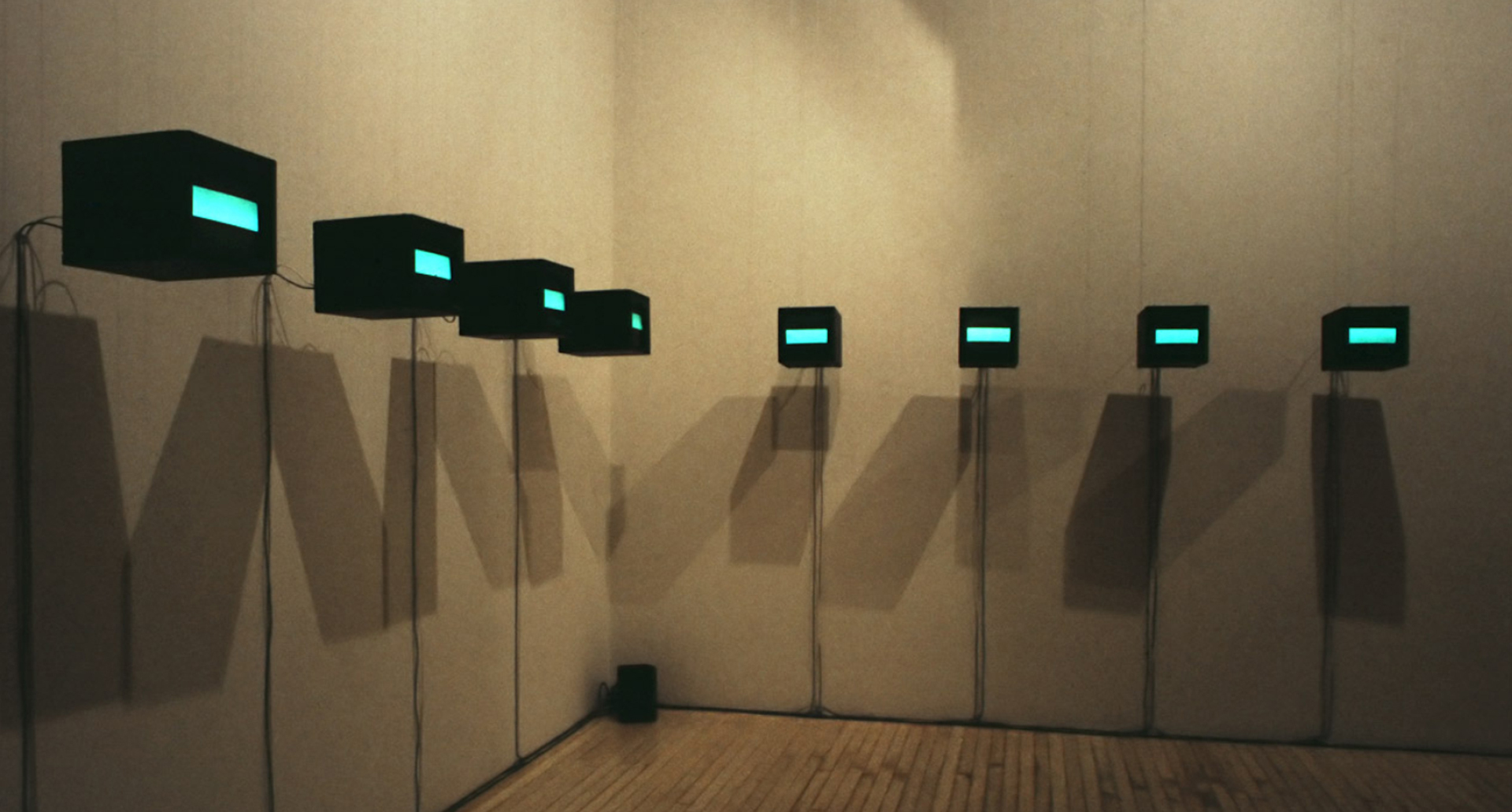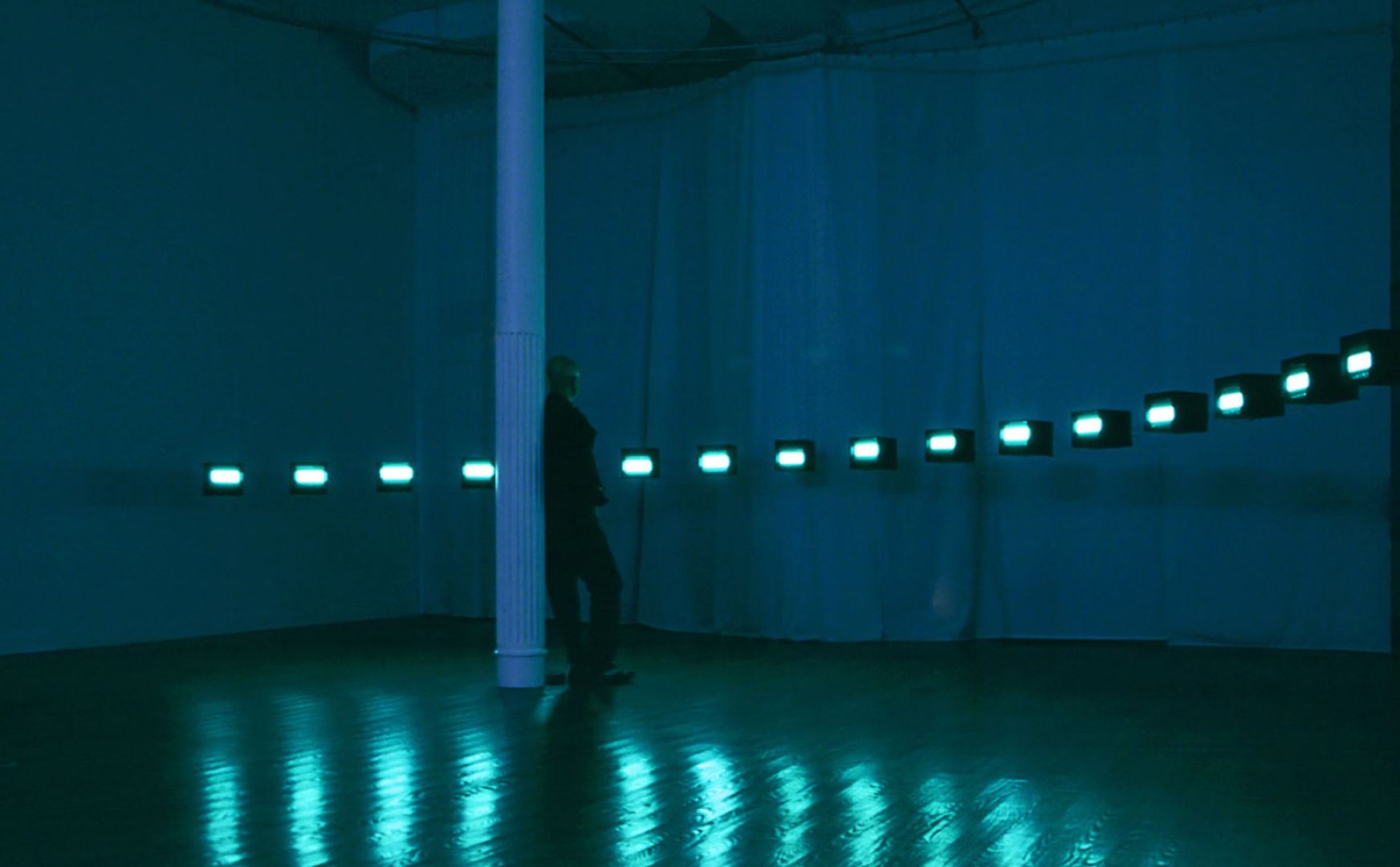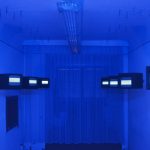Erwin Redl: Corner Study II
Title:
- Corner Study II
Artist(s) and People Involved:
Exhibiting Artist(s):
Symposium:
- ISEA97: Eighth International Symposium on Electronic Art
-
More artworks from ISEA97:


Artist Statement:
The installation deals with the flatness of the primary icon of our digital culture — the monitor. Any information on the monitor is “flat”; the idea of 3D in an electronic landscape is just an idea —a complicated mental accomplishment to trick spatial sensation. Along one corner of the gallery two rows of four monitors each are hanging from the ceiling. Forming a right angle with four monitors on each side, the corner itself becomes the crucial object in space. The image on the eight monochrome monitors is a static grid of vertical thin lines without any spatial depth. A second circular grid of vertical thin lines moves very slowly from the left outside monitor to the center monitors to the right outside monitor. At the same time an additional circular grid progresses in a symmetrical movement from the right to the center and to the left. Another lethargic temporal cycle is defined by the gradual dissolve of the grids by lowering the contrast of the dark and light lines till they merge in a monochrome flat color — all monitors show the same monochrome rectangle. The spatial movement comes to a halt until the contrast is increased and the grids become visible again. Three sound sources (left/center/right) are synchronized to all spatial movements on the monitors and the slow dissolve of the grid. Short acoustic signals follow the movement of the grids and the level of the grids’ contrast defines the volume of the tones. As soon as the grid dissolves into the monochrome color the differentiated sound signals fade into a uniform and even flow of gray noise. When the visual grid comes back the tones emerge again and the gray noise fades out slowly. Our attention is slowed down and focused on the gradual changes in time that characterize our perception of space. Space itself cannot be experienced by our visual sense because it is empty, void. We only see the ‘object’ next to it, the walls idealized as planes. A plane is the opposite of space but it defines space in the only possible way as its negative. The plane itself is only present in its (negative) relationship to space. We can think of a single plane but its only ‘place’ is imagination. In case of planes as the surrounding of space we see them as simple geometric shapes. Their boundaries are idealized as lines. A line is the opposite of a plane but it defines a plane in the only possible way as its negative. The phenomenology of our spatial perception is chronological. We don’t see “space”, we see changes in our visual field interpreted as “something new” that reminds us of a previous experience called “space”. The next spatial/visual change enables us to re-interpret the first idea of this space and limits this interpretation to certain possibilities — we measure, we start to count.








